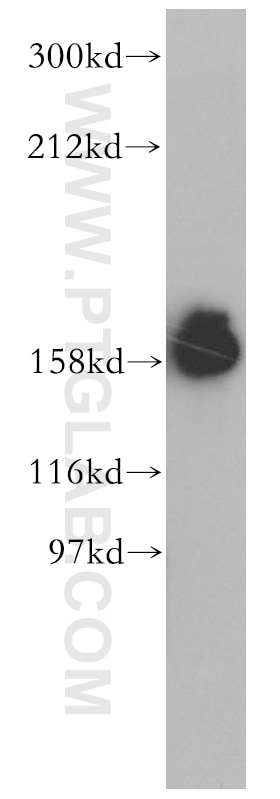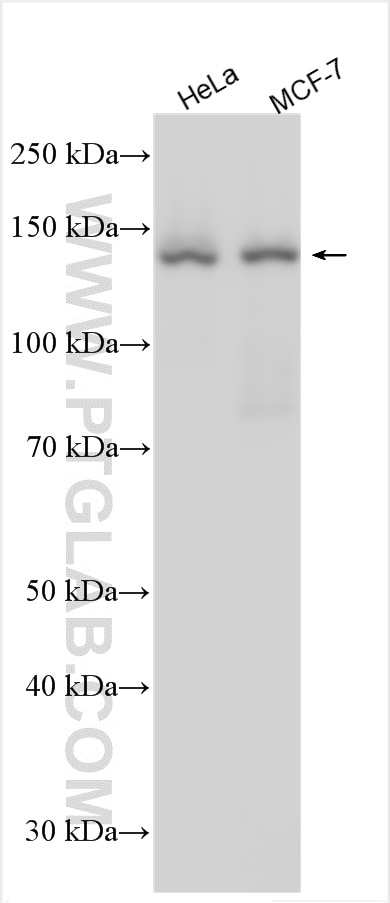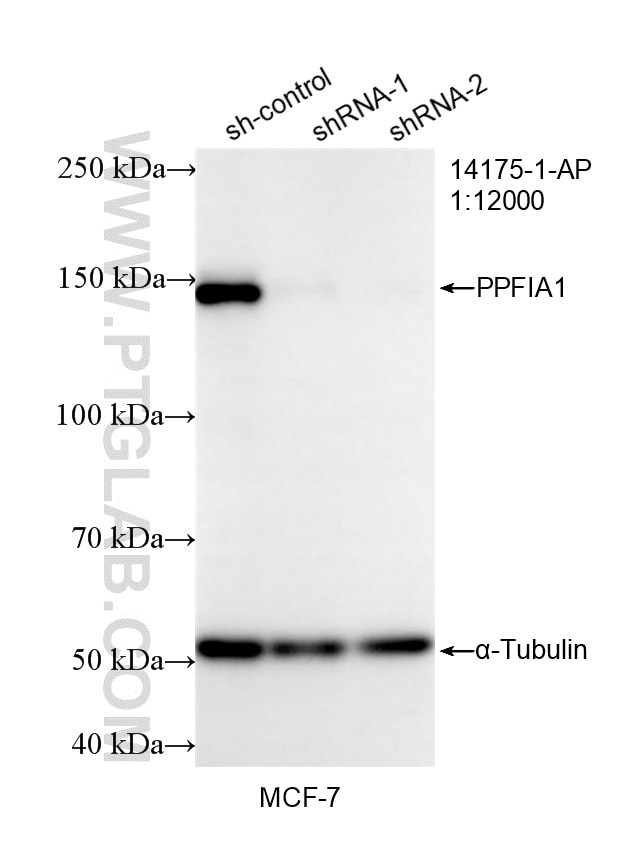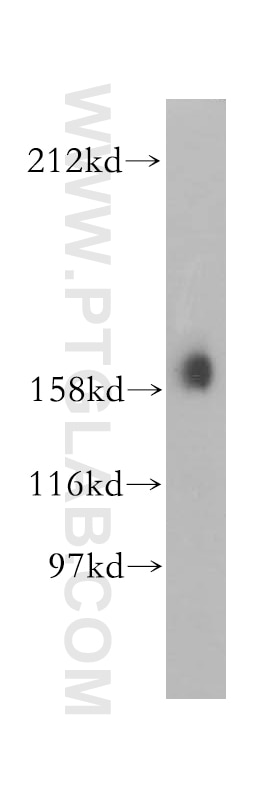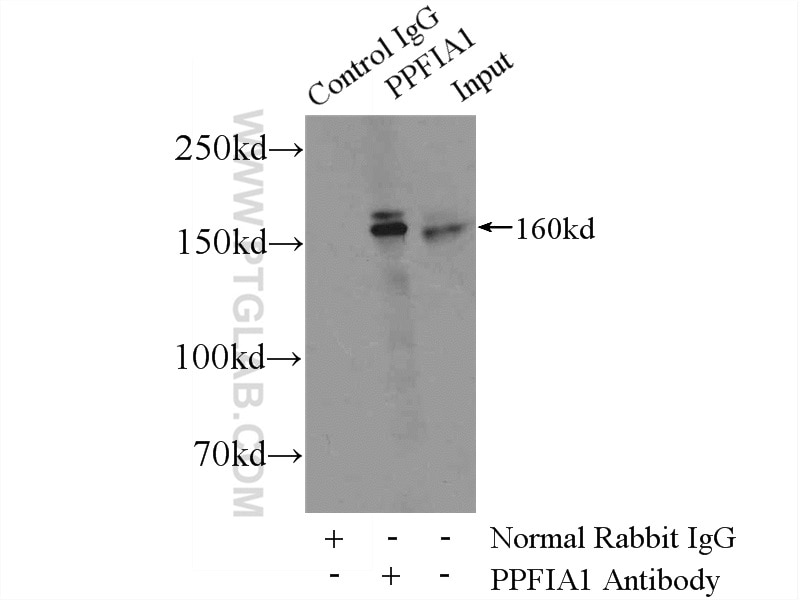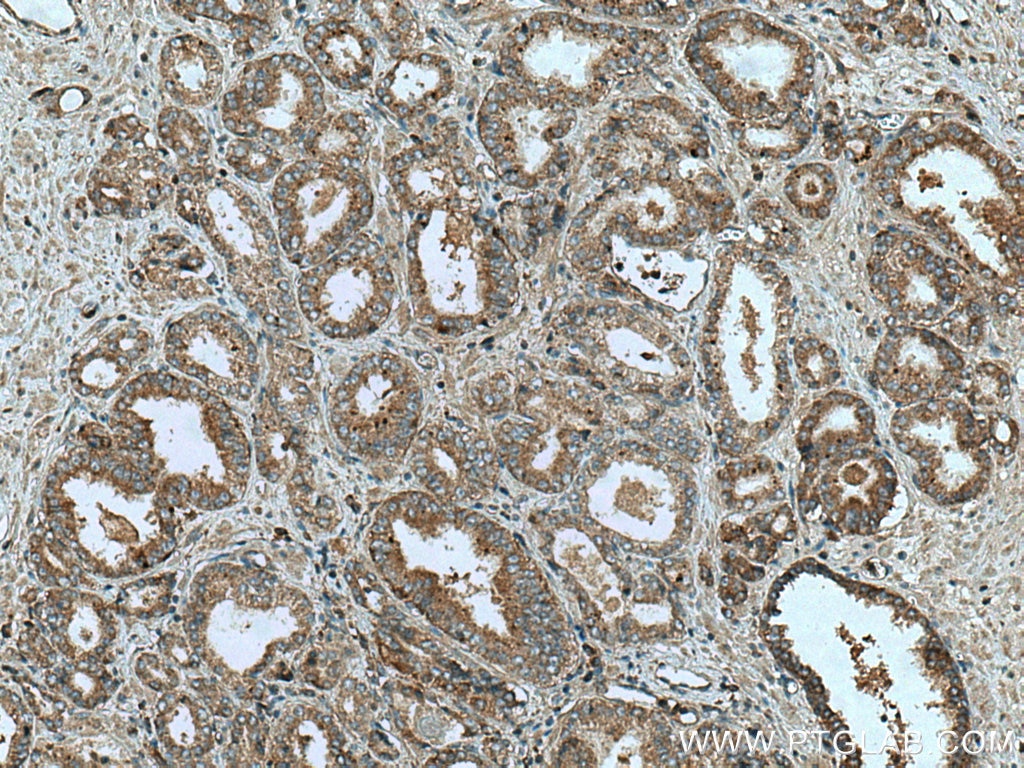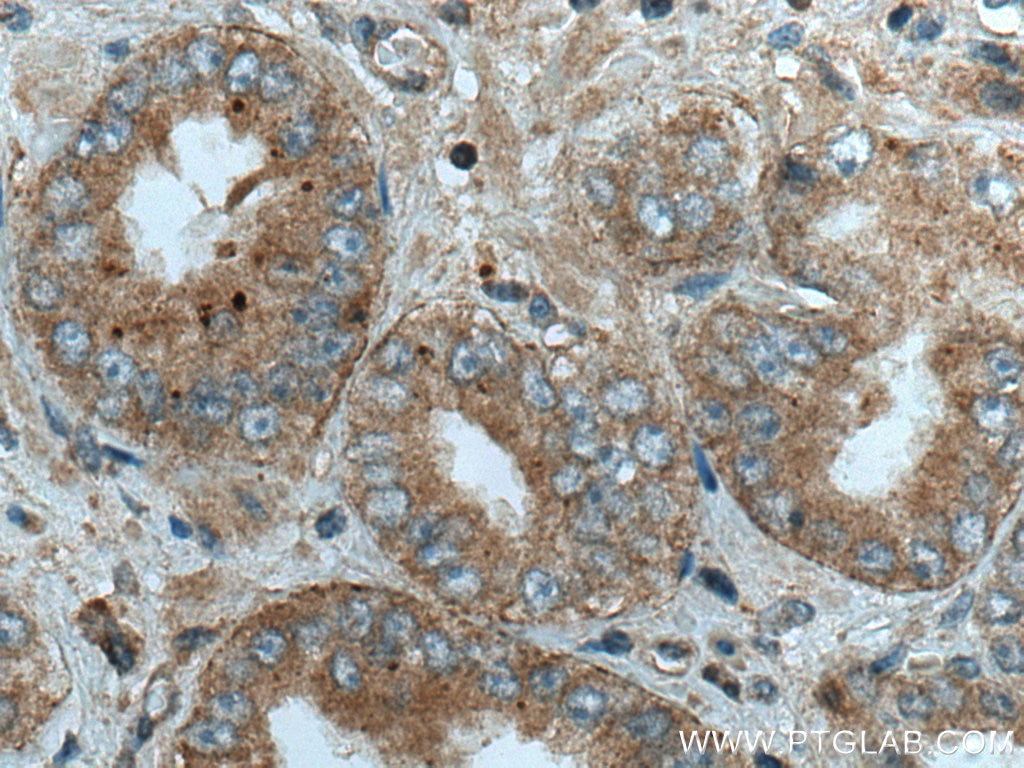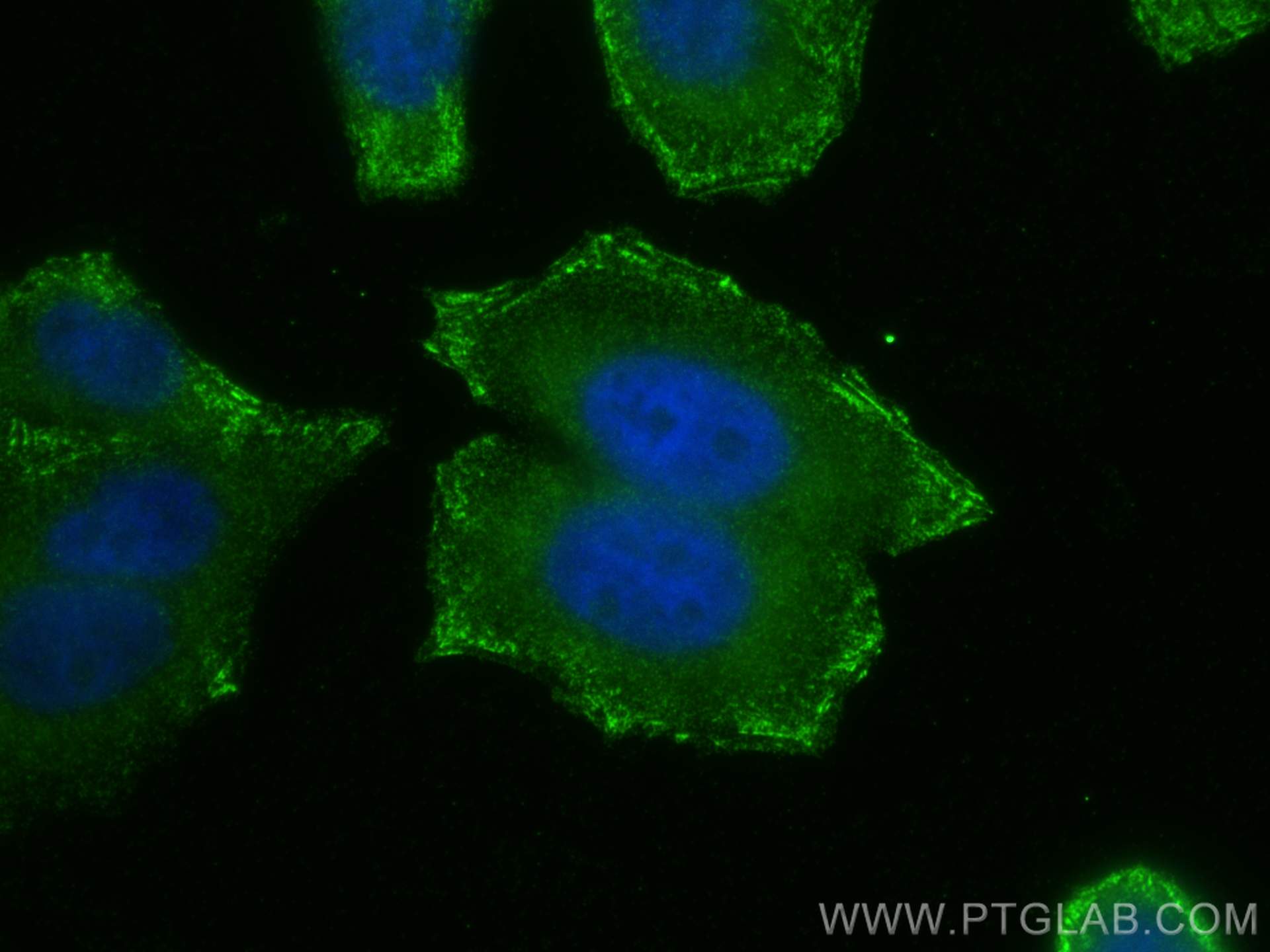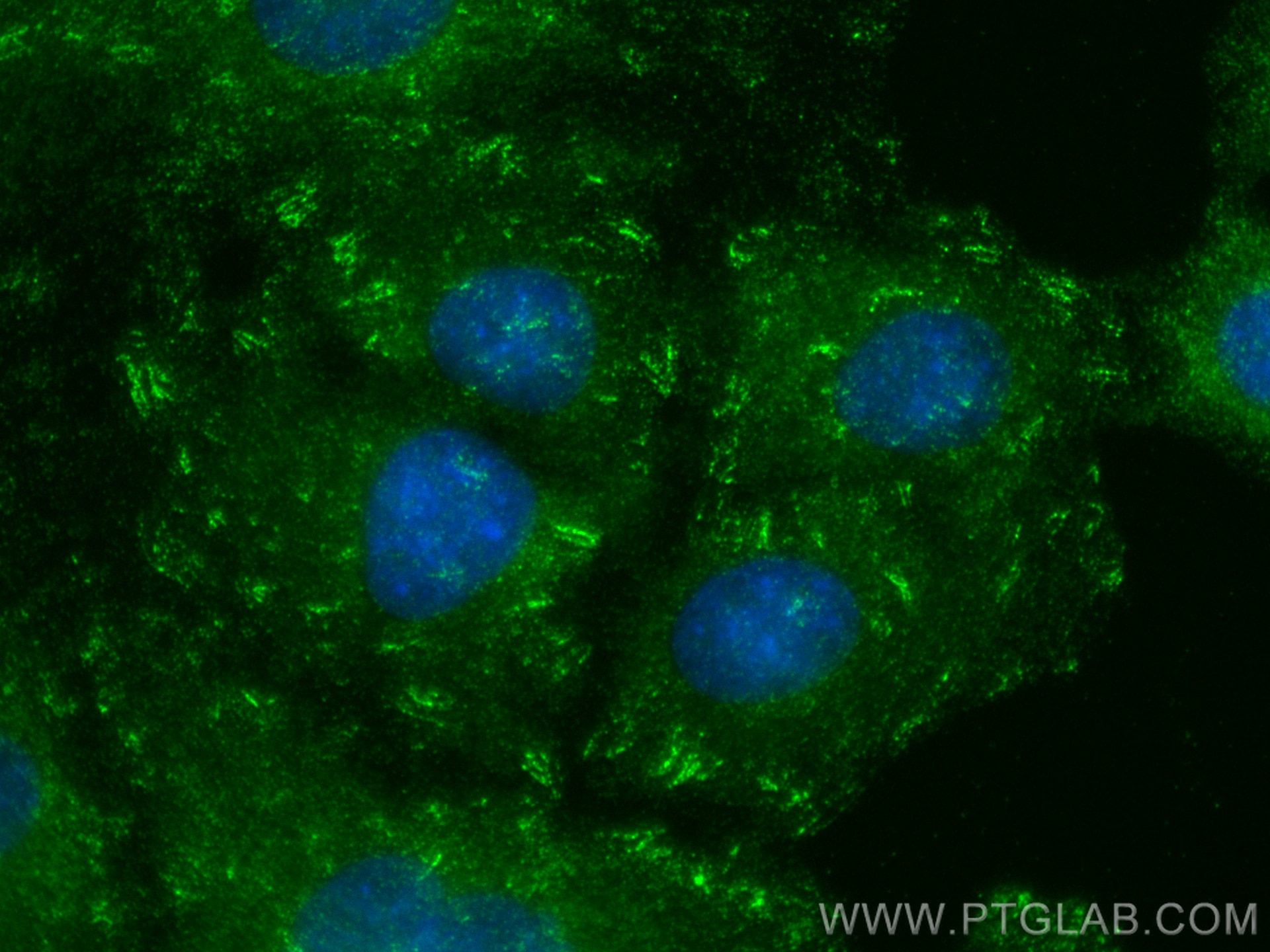- Featured Product
- KD/KO Validated
Liprin Alpha 1 Polyklonaler Antikörper
Liprin Alpha 1 Polyklonal Antikörper für WB, IHC, IF/ICC, IP, ELISA
Wirt / Isotyp
Kaninchen / IgG
Getestete Reaktivität
human, Maus, Ratte und mehr (1)
Anwendung
WB, IHC, IF/ICC, IP, ELISA
Konjugation
Unkonjugiert
Kat-Nr. : 14175-1-AP
Synonyme
Geprüfte Anwendungen
| Erfolgreiche Detektion in WB | HeLa-Zellen, MCF-7-Zellen |
| Erfolgreiche IP | MCF-7-Zellen |
| Erfolgreiche Detektion in IHC | humanes Prostatakarzinomgewebe Hinweis: Antigendemaskierung mit TE-Puffer pH 9,0 empfohlen. (*) Wahlweise kann die Antigendemaskierung auch mit Citratpuffer pH 6,0 erfolgen. |
| Erfolgreiche Detektion in IF/ICC | HepG2-Zellen, A549-Zellen |
Empfohlene Verdünnung
| Anwendung | Verdünnung |
|---|---|
| Western Blot (WB) | WB : 1:2000-1:12000 |
| Immunpräzipitation (IP) | IP : 0.5-4.0 ug for 1.0-3.0 mg of total protein lysate |
| Immunhistochemie (IHC) | IHC : 1:50-1:500 |
| Immunfluoreszenz (IF)/ICC | IF/ICC : 1:50-1:500 |
| It is recommended that this reagent should be titrated in each testing system to obtain optimal results. | |
| Sample-dependent, check data in validation data gallery | |
Veröffentlichte Anwendungen
| KD/KO | See 10 publications below |
| WB | See 18 publications below |
| IHC | See 3 publications below |
| IF | See 20 publications below |
Produktinformation
14175-1-AP bindet in WB, IHC, IF/ICC, IP, ELISA Liprin Alpha 1 und zeigt Reaktivität mit human, Maus, Ratten
| Getestete Reaktivität | human, Maus, Ratte |
| In Publikationen genannte Reaktivität | human, Affe, Maus |
| Wirt / Isotyp | Kaninchen / IgG |
| Klonalität | Polyklonal |
| Typ | Antikörper |
| Immunogen | Liprin Alpha 1 fusion protein Ag5381 |
| Vollständiger Name | protein tyrosine phosphatase, receptor type, f polypeptide (PTPRF), interacting protein (liprin), alpha 1 |
| Berechnetes Molekulargewicht | 1202 aa, 136 kDa |
| Beobachtetes Molekulargewicht | 140-160 kDa |
| GenBank-Zugangsnummer | BC034046 |
| Gene symbol | Liprin Alpha 1 |
| Gene ID (NCBI) | 8500 |
| Konjugation | Unkonjugiert |
| Form | Liquid |
| Reinigungsmethode | Antigen-Affinitätsreinigung |
| Lagerungspuffer | PBS with 0.02% sodium azide and 50% glycerol |
| Lagerungsbedingungen | Bei -20°C lagern. Nach dem Versand ein Jahr lang stabil Aliquotieren ist bei -20oC Lagerung nicht notwendig. 20ul Größen enthalten 0,1% BSA. |
Hintergrundinformationen
Liprin alpha 1, encoded by the PPFIA1 gene, is a member of the LAR protein-tyrosine phosphatase-interacting protein (liprin) family. Liprins interact with members of LAR family of transmembrane protein tyrosine phosphatases, which are known to be important for axon guidance and mammary gland development. Liprin alpha 1 may regulate the disassembly of focal adhesions and thus help orchestrate cell-matrix interactions (PMID: 7796809). Alternatively spliced transcript variants encoding distinct isoforms have been described.
Protokolle
| PRODUKTSPEZIFISCHE PROTOKOLLE | |
|---|---|
| WB protocol for Liprin Alpha 1 antibody 14175-1-AP | Protokoll herunterladen |
| IHC protocol for Liprin Alpha 1 antibody 14175-1-AP | Protokoll herunterladenl |
| IF protocol for Liprin Alpha 1 antibody 14175-1-AP | Protokoll herunterladen |
| IP protocol for Liprin Alpha 1 antibody 14175-1-AP | Protokoll herunterladen |
| STANDARD-PROTOKOLLE | |
|---|---|
| Klicken Sie hier, um unsere Standardprotokolle anzuzeigen |
Publikationen
| Species | Application | Title |
|---|---|---|
Nat Commun Structural basis of liprin-α-promoted LAR-RPTP clustering for modulation of phosphatase activity. | ||
EMBO J The CEP170B-KIF2A complex destabilizes microtubule minus ends to generate polarized microtubule network
| ||
Nat Commun PPFIA1 drives active α5β1 integrin recycling and controls fibronectin fibrillogenesis and vascular morphogenesis.
| ||
Elife Local activation of focal adhesion kinase orchestrates the positioning of presynaptic scaffold proteins and Ca2+ signalling to control glucose-dependent insulin secretion. | ||
Mol Oncol Liprin-α1 contributes to oncogenic MAPK signaling by counteracting ERK activity
| ||
Stem Cells Transl Med Enhanced structure and function of human pluripotent stem cell-derived beta-cells cultured on extracellular matrix. |
